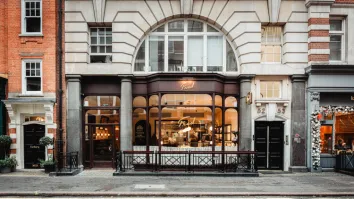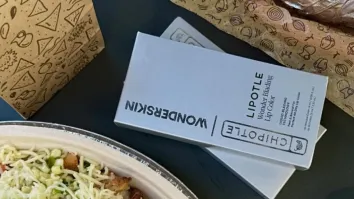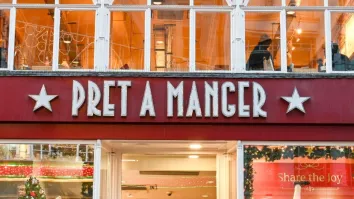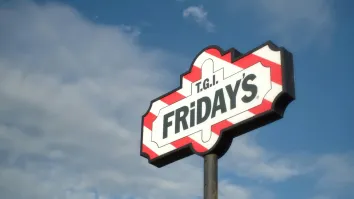The psychology of QSR menus: engineering
Revenue Management Solutions VP Dora Furman presents the latest thinking on categorisation strategy and targeting for optimal profitability.
There is a lot to be said for the theory of “keeping it simple”. A clear, undaunting menu makes for a more pleasant dining experience for consumers and will encourage a relaxed atmosphere and potentially longer dwell-time.
However, each visit must be profitable for the operator so the menu needs to work for them too. The layout of the menu needs to guide decision-making and pricing should work for the target audience, so what’s the best way to ensure consumers are directed to a dish they will love while driving profit for the business?
Layout
When constructing the menu, QSR operators should consider whether the consumer comes with preconceptions about their experience or their needs from that visit, for example: Did I come here for dinner or for a burger?
Operators should consider how easily the structure and layout of the menu guide that consumer through the decision-making process. Are burgers organised in one section of the menu, dispersed among 20 different main plates, or located within multiple sections of the menu?
Effective menu category headers help guide the customer in their decision. The categories should fit and highlight what the restaurant is trying to achieve as a brand or how customers already view the concept, for example: “We are known for burgers and people come here for burgers.” In this case, creating a section that highlights the burgers will help expedite the decision-making process.
Sections should also be easily digestible for the customer. QSR operators sometimes worry that the “golden number” of items in a menu category (starters, mains, desserts) is seven, as the belief is that more will overwhelm customers. However, while some research points to seven, it’s very limited in scope, and there are reports of success with other numbers.
Initial success is based on the organisation of the menu, and ensuring the sections are logical and relatable to the overall dining experience. Taking our burger example, if customers come to the restaurant for burgers, having a section that closely follows with sandwiches may be the logical next step in persuading them to try something else that may be more profitable to the restaurant.
A sudden introduction of a main dish category with prices double that of the burgers may put the customer off and not nudge the customer into the more profitable purchase decision.
Besides the organisation of categories, the order in which items are listed within a category is also important. Some believe including an expensive item near the top of a menu makes everything else seem reasonably priced. However, I’d advise leading with a mid-priced item, reflective of the general pricing, to limit “sticker shock” (dismay at a price) and any resulting change to buying behaviour.
So where does that leave us on item positioning? There is a lot of research on placement within a menu, much of it offering conflicting advice. Truly understanding the brand and how people navigate its menu involves additional testing. In our practice, we have found menu placement and additional items receive attention using heightened descriptions, selective photography or other visual cues, which can lead to favourable menu use and increased orders of items to drive spend.
Boxing an item will naturally draw attention to it. However, the item description and cost will still influence the decision. QSR operators must ensure boxed items are appealing and appropriately priced. More importantly, the item needs to deliver on quality and value, and be an item that the operator is proud of. This is a marketing opportunity to win over that customer and ensure they come back regularly. Don’t disappoint.
QSR operators should use item descriptions as a real chance to showcase the menu and the skill of their chefs. More detailed descriptions may provide the sense of greater volume but more importantly, they provide an opportunity to communicate more unique ingredients as well as time or care (think hand-made, locally grown, etc.). This language helps create a vision of a dish that may otherwise be difficult to conjure in establishments where photography is not part of the menu.
Pricing
To encourage customers to spend more, some maintain price tags should be as inconspicuous as possible – even going so far as removing pound-signs because it reminds customers they’re spending money.
However, let’s be realistic: there are limited opportunities to hide price-tags without aggravating the consumer. Examples where it can work include extremely high-end restaurants or on a wine list. Most consumers take price into consideration and making it inconspicuous may arouse suspicion and mistrust.
A Cornell University study found that written-out prices, such as “thirteen pounds” and using £6.95 instead of £7, also encourage customers to spend more. Written prices may encourage higher spend as it’s harder to compare prices across the menu and the decision may therefore hinge more on description.
In most languages, people read left to right, so research suggests the customer will see a price-point of 6.95 as a 6-pound item. A 6-pound dish may be acceptable while a 7-pound item may not. Leveraging a .95 or .99 ending allows a restaurant operator to approach a higher price-point without negatively impacting the customer’s purchase decision.
In summary, when it comes to engineering a menu for success, the following should be given top billing:
- Sensible sections
- Logical item grouping
- Item order within each section
- Visual vs written description
- Menu highlights
- Pricing display
Using this advice, QSR operators should be able to design a menu that is engineered for success, ensuring customers enjoy choosing their meals and information is correct and attractively displayed. But keep in mind, product quality and service are ultimately what customers will remember and why they will keep coming back for long-term success.























